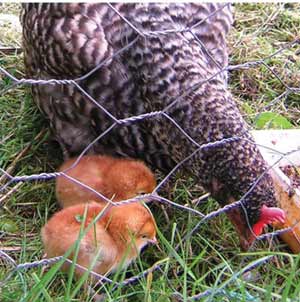| 2006 |

|
YEAR BOOK |
St Vincent's University Hospital & University College Dublin
|
Chickens to crack the code
|

C.jejuni can be found in raw meat, undercooked meat, non-chlorinated water and unpasteurised milk. Incidence of this disease in humans is especially prevalent in developed countries. One hypothesis for this increased susceptibility incorporates decreased exposure through improved hygiene standards with increased variability of Campylobacter strains.
The Comparative Immunogenomics group at SVUH has developed some expertise in the study of chicken immunity. Together with our Canadian collaborators in VIDO, we aim to monitor chicken flocks during controlled C.jejuni infections. We will use gene microarrays to characterise the genetic signatures of diseased and uninfected chickens, and to determine which immune genes are switched "on" or "off" during C.jejuni colonisation. By comparing these genes in chicken and human genomes we hope to decipher how and why the same bug can behave so differently in different hosts. A more distant goal is to breed chickens that are resistant to Campylobacter colonisation.
Funded by the Dept. of Agriculture & Food through FIRM under the National Development Plan 2000-2006.
Contact: Prof Cliona O'Farrelly, Director,
Research Laboratories, St. Vincent's University Hospital, Elm Park, Dublin 4
E-mail: [email protected]
Web: http://ercbinfo1.ucd.ie/